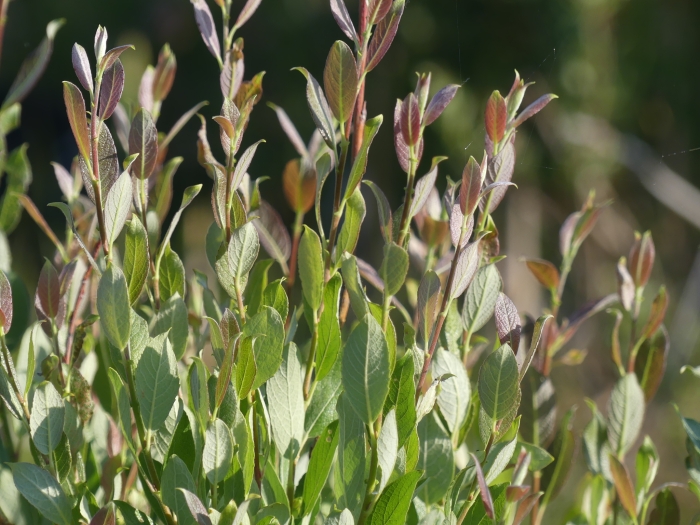Pale Willow
(Salix starkeana)
Pale Willow (Salix starkeana)
/
/

Aiva Noringseth
CC BY 4.0
Image By:
Aiva Noringseth
Recorded By:
Copyright:
CC BY 4.0
Copyright Notice:
Photo by: Aiva Noringseth | License Type: CC BY 4.0 | License URL: http://creativecommons.org/licenses/by/4.0/ | Rights Holder: Aiva Noringseth | Publisher: iNaturalist | Date Created: 2023-06-28T07:45:27-07:00 |



















Estimated Native Range
Summary
Salix starkeana, commonly known as Pale Willow, is a small, prostrate shrub that is deciduous and native to the riparian zones, wetlands, and boggy areas of Europe and northern Asia. It is particularly adapted to cold winter, frost-rich regions. The Pale Willow typically grows up to 3 feet in height and features red-brown to purple-red branches with olive-green leaf tops. Its leaves are broadly lanceolate to ovoid or obovate, and it produces elliptical catkins as inflorescences, which are not particularly showy. In its native habitat, it plays a role in supporting wetland ecosystems.
The Pale Willow is valued for its ability to thrive in wet conditions and is often used for soil stabilization and habitat restoration projects. It is suitable for planting in water gardens, along stream banks, and in other moist areas of the landscape. This species prefers full sun to light shade and requires consistently moist to wet peaty soils. While it is not commonly used in ornamental horticulture, it can provide ecological benefits in appropriate settings. In cultivation, it may face challenges such as willow scab and pests like the willow beetle. It is listed as threatened with extinction and endangered in regions like Bavaria and Baden-Württemberg in Germany, indicating the need for conservation efforts.CC BY-SA 4.0
The Pale Willow is valued for its ability to thrive in wet conditions and is often used for soil stabilization and habitat restoration projects. It is suitable for planting in water gardens, along stream banks, and in other moist areas of the landscape. This species prefers full sun to light shade and requires consistently moist to wet peaty soils. While it is not commonly used in ornamental horticulture, it can provide ecological benefits in appropriate settings. In cultivation, it may face challenges such as willow scab and pests like the willow beetle. It is listed as threatened with extinction and endangered in regions like Bavaria and Baden-Württemberg in Germany, indicating the need for conservation efforts.CC BY-SA 4.0
Plant Description
- Plant Type: Shrub
- Height: 1-6 feet
- Width: 1-15 feet
- Growth Rate: Moderate
- Flower Color: N/A
- Flowering Season: Spring
- Leaf Retention: Deciduous
Growth Requirements
- Sun: Full Sun, Part Shade
- Water: High
- Drainage: Medium, Slow, Standing
Common Uses
Bank Stabilization, Erosion Control, Low Maintenance, Water Garden
Natural Habitat
Native to riparian zones, wetlands, and boggy areas of Europe and northern Asia
Other Names
Common Names: Diamondleaf Willow
Scientific Names: , Salix starkeana, Salix bicolor, Salix foliosa, Salix foliosa, Salix livida, Salix livida var. cotoneastrifolia, Salix livida var. dublanensis, Salix livida var. microphylla, Salix livida var. orbicularis
GBIF Accepted Name: